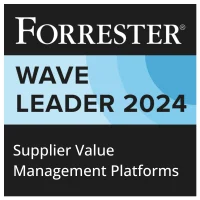Vendor Risk Management is the systematic process of identifying, assessing, and mitigating risks associated with vendors and suppliers in the procurement process. It involves evaluating a vendor’s ability to provide uninterrupted services or products, ensuring compliance with legal and regulatory requirements, and protecting organizational assets from potential operational, financial, and reputational risks.
Key Benefits
‘- Risk Mitigation: Vendor Risk Management helps organizations to continuously monitor and assess the risks associated with their suppliers. This proactive approach minimizes the likelihood of supply chain disruptions and ensures that potential issues are addressed before they escalate into major problems.
– Compliance Assurance: By implementing vendor risk management practices, companies can ensure that their suppliers adhere to legal, regulatory, and industry standards, thus reducing the risk of penalties and maintaining their reputation.
– Improved Supplier Selection: Evaluating suppliers based on a comprehensive set of risk criteria allows organizations to make more informed decisions. This ensures that they partner with suppliers who not only meet quality and cost requirements but also align with their risk management goals.
– Financial Stability Analysis: Vendor Risk Management involves assessing the financial health of suppliers to ensure they are capable of fulfilling contracts without risk of insolvency. This helps in maintaining an uninterrupted supply chain and avoids unexpected costs associated with supplier failures.
– Enhanced Data Security: By evaluating the data security practices of vendors, organizations can prevent data breaches and safeguard sensitive information. This is especially critical in industries where data privacy is a top priority, thus avoiding significant compliance and financial repercussions.’
Related Terms
‘- Risk Mitigation: Vendor Risk Management helps organizations to continuously monitor and assess the risks associated with their suppliers. This proactive approach minimizes the likelihood of supply chain disruptions and ensures that potential issues are addressed before they escalate into major problems.
– Compliance Assurance: By implementing vendor risk management practices, companies can ensure that their suppliers adhere to legal, regulatory, and industry standards, thus reducing the risk of penalties and maintaining their reputation.
– Improved Supplier Selection: Evaluating suppliers based on a comprehensive set of risk criteria allows organizations to make more informed decisions. This ensures that they partner with suppliers who not only meet quality and cost requirements but also align with their risk management goals.
– Financial Stability Analysis: Vendor Risk Management involves assessing the financial health of suppliers to ensure they are capable of fulfilling contracts without risk of insolvency. This helps in maintaining an uninterrupted supply chain and avoids unexpected costs associated with supplier failures.
– Enhanced Data Security: By evaluating the data security practices of vendors, organizations can prevent data breaches and safeguard sensitive information. This is especially critical in industries where data privacy is a top priority, thus avoiding significant compliance and financial repercussions.’
References
For further insights into these processes, explore Zycus’ dedicated resources related to Vendor Risk Management:
- A Realistic Look at the Promises and Pitfalls of GenAI in Procurement
- Deep Value AI Agents in Procurement: How Less Becomes More with AI
- The Top 5 Benefits of E-Procurement: Streamlining Procurement for a Brighter Future
- Counterintuitive Strategies to Navigate the Recession
- Government Procurement Transformation: Panel Discussion
White Papers
Master the UK Procurement Act 2023: Ensure Compliance & Drive Procurement Excellence

Filter by
Compliant Invoicing
Compliant Invoicing refers to the process of generating, submitting, and managing invoices in adherence with legal, regulatory, and contractual requirements.
Continuity Plan
A Continuity Plan is an organized set of policies and procedures designed to ensure that a company’s essential operations can
Cost Modeling
Cost Modeling in procurement refers to the analysis and estimation of the total cost of ownership of a product or
Contract Audit
Contract Audit is a systematic evaluation of agreements and related documentation to ensure compliance with contractual terms, identify discrepancies, and
Procurement Cycle
The Procurement Cycle refers to the end-to-end process through which an organization identifies its needs, sources suppliers, negotiates contracts, places
Procurement Master Data Management
Procurement Master Data Management is the disciplined approach to managing core, consistent procurement information, including supplier, product, and contract data,






















































